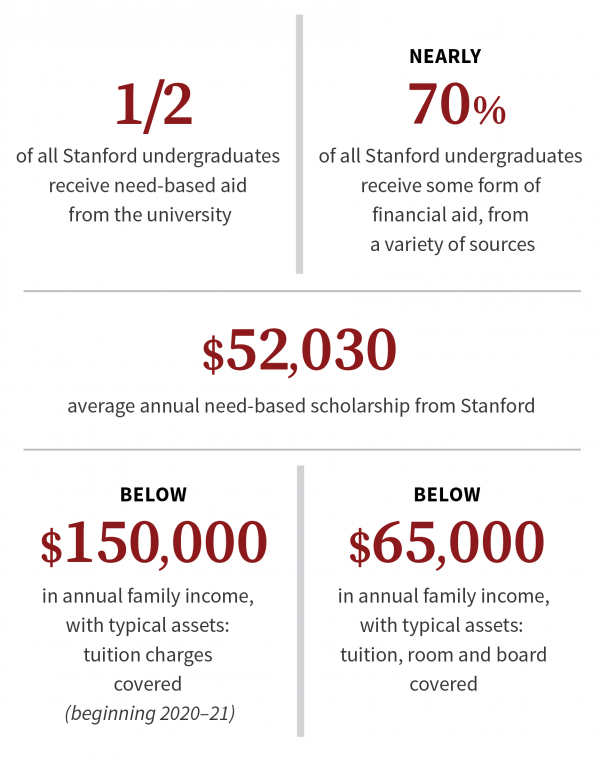Stanford’s Board of Trustees set 2020-21 tuition levels at its meeting this week, and in doing so announced an expansion of undergraduate financial aid for middle-income families.

Stanford’s Board of Trustees set 2020-21 tuition levels and expanded undergraduate financial aid for middle-income families. (Click image to enlarge) (Image credit: Dana Granoski)
Building on last year’s action to expand middle-class aid by excluding home equity from the financial aid calculation, Stanford in 2020-21 will offer tuition-free access to families with annual incomes below $150,000, up from the current $125,000.
“In removing home equity from the financial aid calculation last year, the board indicated it was taking the first in a series of steps to expand financial support for middle-income families,” said Board Chair Jeffrey S. Raikes. “This is the next step. In addition to our continuing work to ensure that Stanford is financially accessible for the lowest-income families, we believe it’s important to bolster our efforts to support families in the middle, who often are squeezed by the costs of college.”
Stanford has a need-blind admission process for U.S. applicants, meaning that an applicant’s financial need is not factored into the admission process. Once offered admission, Stanford undergraduates are offered need-based financial assistance sufficient to cover their Stanford expenses without needing to take out student loans.
Tuition provides essential support for the academic program, student services and financial aid, as well as infrastructure and other support services at Stanford. However, tuition only covers a portion of the cost of educating each Stanford undergraduate.
2020-21 undergraduate tuition and financial aid
Undergraduate tuition for 2020-21 will be $55,473, an increase of 4.9 percent. Total charges for full-tuition-paying families will be $73,425, an increase of 4.9 percent, which includes $17,256 for room and board and $696 for a mandatory health fee.
Most families at Stanford do not pay the full tuition price. Half of all Stanford undergraduates receive need-based aid from the university, receiving an average annual scholarship from Stanford of $52,030. Nearly 70 percent of Stanford undergraduates receive some form of financial aid, from a variety of sources, toward the cost of attendance.
Currently at Stanford, parents with annual incomes below $125,000 and assets typical of that income level are expected to pay no tuition; Stanford offers scholarship support to cover this cost. This threshold will increase to $150,000 in 2020-21. In addition, parents with annual incomes below $65,000 and typical assets pay no tuition and also pay no charges for room and board. (Students receiving need-based aid are expected to contribute an average of $5,000 per year in work and summer earnings toward their cost of attendance.)
Many families with annual incomes above these thresholds also are eligible to receive scholarship support from Stanford. Prospective students can estimate their net cost to attend Stanford using Stanford’s online tools.
In total, Stanford’s undergraduate need-based financial aid budget is expected to increase 9.7 percent in 2020-21. Over 10 years, Stanford’s total funding for undergraduate need-based aid will have increased from $119 million in 2010-11 to $192 million in 2020-21.
Graduate and professional programs, which have different tuition rates, will generally increase by 3.5 percent in 2020-21 under the trustees’ action. Detailed information for these programs will be posted on the registrar’s website.